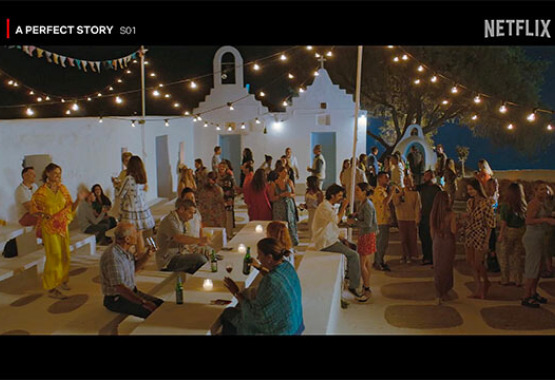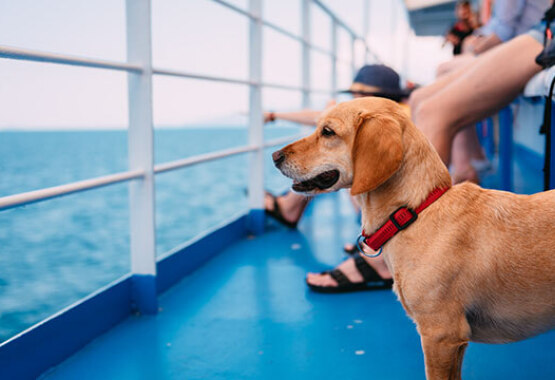The Route that Apostle Paul followed in Greece
One of the most remarkable religious routes in Greece is "The Route that Apostle Paul Followed in Greece". Paul constitutes a remarkable personality for the Christian religion, although he never belonged to Jesus’ 12 Disciples cycle. He spread the word of Christianity more than anybody else and for this reason he was named "Equal-to-the-Apostles" and “Apostle of the Nations”.
Among the countries he visited to spread Christianity, Apostle Paul came also to Greece, preaching the Holy Gospel and teaching people about Jesus’ mission. His journey in Greece is a route that can touch not only the believers but also everybody who loves history. “The Route that Apostle Paul Followed in Greece" passes through all places where the Apostle preached and constitutes an ideal combination of pilgrimage and sightseeing in some of the most beautiful places in Greece.
Places that Apostle Paul stopped during his journey in Greece:
Samothrace
According to the island’s tradition, when Apostle Paul passed through Samothrace he landed in the Ancient City’s port which nowadays is called Paliapoli (Old City). In memory of this event, a three-aisled Early Christian church was constructed at that place. For its construction locals used pieces from architectural parts of ancient buildings.
Kavala (Neapoli)
When Apostle Paul was in Troas, he dreamt of a tall impressive Macedonian man who stood in front of him and begged him to “come to Macedonia and help them”. This dream was deciding for his journey and inaugurated his great, wonderful and saving relationship with Greeks. He had already begun his tour aiming to increase and boost the construction of Churches.
In the winter of the year 49, Apostle Paul lands on European land for the first time. The place he first came after travelling for two days was Neapoli . Seven years later when he came to Neapoli for the second time it took him five days to cover the same distance.
Apostle Paul arrived in Agios Nikolaos area and after following Via Egnatia he reached Philippi, 12 km from Neapoli. He was accompanied by Silas, Timothy, and Luke the doctor, Evangelist and writer of "Acts of the Apostles”.
Philippi
It was Saturday when he reached the place for the first time and many women were gathered in the area. They were the first in Europe to hear him preaching. Among them was Lydia, a noble woman from Thyateira of Asia Minor. She was the first to be baptized and helped remarkably to spreading the word of God.
In Philippi, Paul and Silas were accused of provoking abnormalities in the city and for having habits unusual for the Romans. The two men were caned and imprisoned but a massive earthquake spread panic in the city. The prison’s doors opened and the guard tried to commit suicide. The two Apostles prevent him from harming himself. He then believes in God, he and his family got baptized and the two Apostles were accommodated in his house.
The two Apostles pass by Lydia’s house, who accommodated them, and leave for Thessaloniki. Apostle Paul will keep close relationships with the people from Philippi and will boost them financially several times even when he was imprisoned in Rome. Seven years after his first visit, he will return to Philippi and then visit the place three more times (on April of 57, in spring of 63 and winter of 64).
Amphipolis-Apollonia
Although they were cities of great importance in the area, Apostle Paul passed them by without stopping. He was on a hurry to reach Thessaloniki where he knew there was a synagogue.
Thessaloniki
When they reached Thessaloniki it was fall of 49. Apostles Paul and Silas found the city completely different from what they had seen so far. It was a free from Roman occupation city since 168 B.C. There was also a synagogue close to the port, as the Acts inform us. Apostles Paul went there for three Saturdays. As we are informed, he discussed with the attendants and interprets them abstracts from Holy Bible which mention that Jesus should have been crucified and resurrect from the dead. Some people believed and became Paul’s and Silas’ students. Many of the neophyte Greeks believed, as well as several women who stood out in the city's society. We do not know exactly how many were the first Christians but we know for sure that a church was established in Thessaloniki.
Soon, because of Paul’s activity, problems begin to rise in Thessaloniki and riots are provoked exactly as it had happened in Philippi. During the night Paul and Silas left the city.
These are the only facts known about his stay in Thessaloniki. According to the existing tradition, as he left in a hurry, chased by his fellow countrymen, he came out of a high spot on the walls (probably from a small door) where later Vlatades monastery was established.
East of the position where now Vlatades monastery stands used to be a spring. It is said that he stopped there to drink some water. Every year at this spring, which is known as “Apostle Paul’s Holy Water", people used to honor the Apostle. After the liberation of Thessaloniki, a church in his honor was constructed in this place and the Holy Water became well known. Nowadays, a modern imposing church is the proof that Apostle Paul visited Thessaloniki, preached there and brought Greeks close to Christianity.
Veria
During the night, Paul and Silas left with the help of Christians for Veria. They walked for a while on Egnatia Road and changed their route close to Pella, crossing a lush green fruitful and beautiful area.
Veria was a very busy city with great population and had a flourishing synagogue. As soon as they got there, Paul and Silas visited the synagogue. It is also said that the Jews of Veria were more polite than those in Thessaloniki and heard with great interest Paul preaching the Holy Gospel. Among the attendants were people from the upper classes of Veria, Hebrews and converts and a great number of women.
But soon, the news about Paul’s activities were spread in Thessaloniki. Their enemies from Thessaloniki sent people to Veria to provoke turmoil. Immediately his companions took the Apostle away from Veria. Timothy and Silas remained in Veria. As a gift in return Veria gave to the Apostle of the Nations a new companion. He was Sopatros, son of Pyrrhus, who accompanied him for a long time after his return to Asia.
The spot in Veria where it is said that Paul stood and preached, the so called "Apostle Paul's Podium" is now an imposing monument. Since 1995, a series of religious, cultural and sports events have been established under the name "Pavlia" which end every year with a scientific conference.
Athens
Athens In the year 51 Paul went to Athens by boat. Athens was far from the typical bright city of classical times. The works of art were frequently pillaged, the Romans deserted the city of Pallas Athena and the descent of ideals started to become obvious.
The boat that brought Paul to Athens anchored in Faliro. At that time (and before then) that was the area were the main port of Athens was located. The location of the port was between Kifissos river bed and the small church of Agios Georgios. It is believed that it is constructed on the ruins of the dock of ancient Faliro and the area around it is going to be developed. From there started the road leading to Athens. This was also the road that Paul followed after he got off the boat.
While he was waiting for Silas and Timothy to come from Macedonia, he was walking around the city, discussing with the locals in the synagogue or the market and was upset by the numerous statuettes. His preaching on the death of Jesus on the cross and his resurrection impressed some epicurean and stoic philosophers who characterized him as “newsmonger”. He was never chased for his preaching while he was in Athens. On the contrary he was taken to High Court (Areopagus) in order to preach formally and in more details.
Regarding the spot from where Apostle Paul spoke to the Athenians, it is also said that he preached in front of the High Court's Body as one of its members (Dionysius the Aeropagite) adopted the ideas of his preaching.
Areopagus was the name of the hill west of the Athenian Acropolis.
Apostle Paul’s church was established in 1887 very close to the heart of Athens. Two years later, Queen Olga set the foundations for the construction of a new and larger church. This happened under the Metropolitan bishop Prokopios, Mayor Labros Kallifronas and the architects Trobus and Soultze. In 1923 the Archbishop of Athens Chrysostomos Papadopoulos prescribed that the Vespers of Apostle Paul’s celebration must be performed on Areopagus.
Korinthos
It is not known how he went to Korinthos (Corinth). It is for sure that he left Athens puzzled with how Athenians dealt with his preaching and with the situation in the Churches of Macedonia. While Paul was leaving Athens, Timothy was on his way to Thessaloniki.
In Corinth Paul developed friendship with Akylas and Priscilla who were also tend-makers (as he also was) and already knew some things about Jesus. He stayed and worked with them and every Saturday he preached Jews and Greeks. Most of Jews were not convinced that Jesus was the Messiah and at some point Paul stayed with Titus Justus who was proselyte and lived close to the synagogue. Among the believers was Crispus, chief priest of the synagogue who was baptized together with all his family.
The Acts of the Apostles inform us that at some point Corinthian Jews united against Paul. They dragged him to court accusing him that he was illegally trying to convert people follow his preaching. Hebrews’ statement had no result as Paul's problem had nothing to do with the hostility of the pagans but of his fellow citizens.
Few weeks later he decided to leave Korinthos . He had to quickly go to Ephesus. He said goodbye to his friends and he left Corinth accompanied by Silas, Timothy, Akylas and Priskilla. Apostle Paul is the patron saint of Korinthos and Corinthians built an impressive church in his honor.





